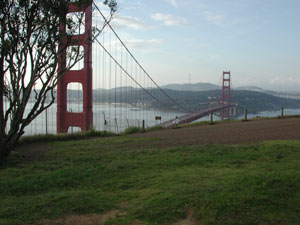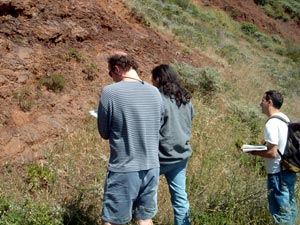| North of the Golden Gate Bridge,
we find the red cherts of the Franciscan Formation - sedimentary
rocks that were originally deposited flat in the oceans during
Jurassic-Cretaceous times (about 100 million years ago). They
are made of up clays and the skeletons of microscopic plankton
(radiolaria), which fell to the sea floor and accumulated
there.
an example of a radiolarian skeleton |
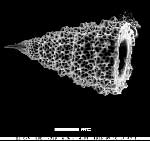 |
Geologic History: |
| 1. Layering |
| 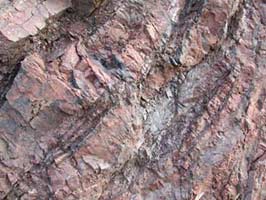
|
The layering is still controversial. One hypothesis
is that these represent original alternations between radiolarian-dominated
deposition and clay-rich deposition (from storms?). An alternative
idea holds that the layers are formed through heat-driven density
differentiation. |
| 2. Folding |
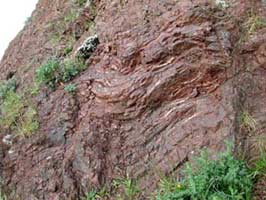
|
The folding and bending of these strata represent soft
sediment deformation on the sea floor before the layers had
become hardened into rock (otherwise, they would be broken
or faulted, not bent). After the sediments became cemented,
the plate that they had been deposited on became subducted—but
these sediments were not subducted and instead became accreted
to the edge of the overlying continent. These processes may
also have caused deformation to the rocks (in addition to
the early soft sediment deformation). |
| 3. Uplift, Weathering
and Erosion |
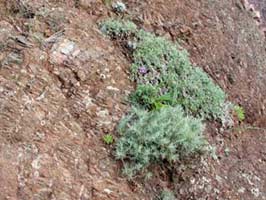
|
These rocks then became uplifted during the last 30 million
years or so during the formation of the Coast Ranges. Weathering
and erosion have acted on these rocks since then. One can observe
piles of loose sediment around the base of the outcrop indicated
ongoing modern erosion caused by both constant atmospheric changes
and the root systems of these plants that have managed to take
hold. |
Additional Resources:
NAGT guidebook:
Stoffer, Philip W. and Gordon, Leslie C. 2001 (eds.). Geology
and Natural History of the San Francisco Bay Area, A Field-Trip
Guidebook. U.S. Geological Survey, Bulletin 2188, http://geopubs.wr.usgs.gov/bulletin/b2188/.
|
